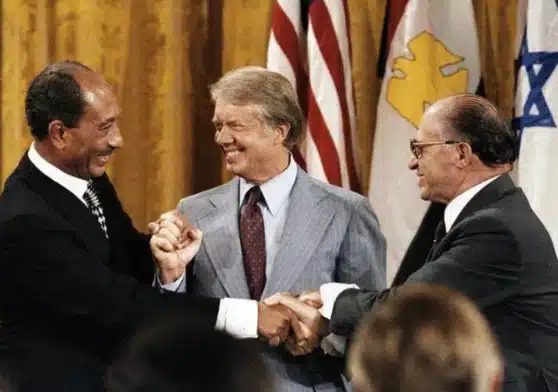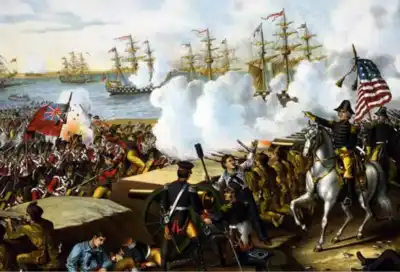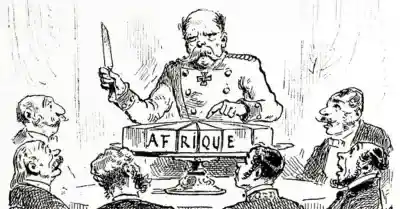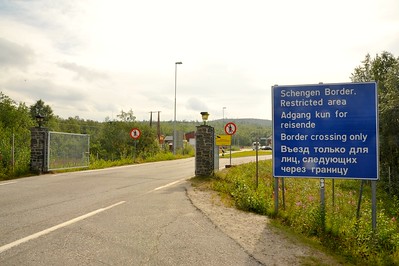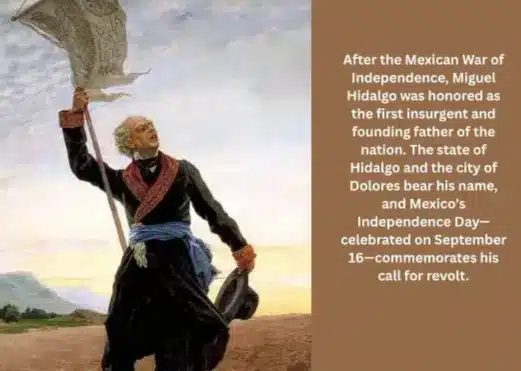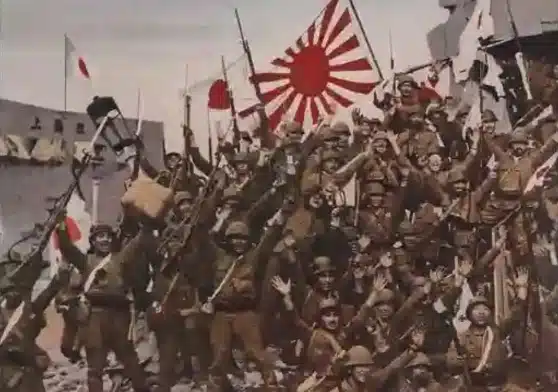Potsdam Conference: Groundwork for a New World Order after WWII
The Potsdam Conference (July-August 1945) established the blueprint for post-WWII geopolitics as the Allied powers (USSR, USA, and UK) negotiated Germany’s fate and Europe’s reorganization. With new leaders Truman and Attlee replacing Roosevelt and Churchill, the conference revealed growing East-West tensions despite agreements on German demilitarization, denazification, and occupation zones. The Allies’ competing visions for reconstruction foreshadowed Cold War divisions, particularly over reparations and Poland’s Soviet-dominated government.
Critical decisions included shifting Poland’s borders westward, approving “orderly” ethnic German expulsions, and issuing the Potsdam Declaration demanding Japan’s surrender. Truman’s revelation of the atomic bomb to Stalin—who already knew via spies—marked a pivotal power shift. While surface cooperation continued, fundamental disagreements over democracy in Eastern Europe and economic policies exposed irreconcilable ideological rifts between the Soviets and Western Allies.
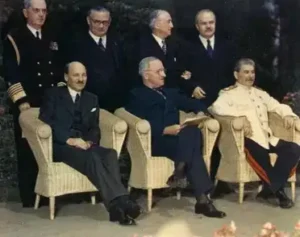
Potsdam Conference, July 1945, Image Source: Picryl.com
The conference left behind a divided and unstable world. Stalin secured Soviet dominance in Eastern Europe, while Truman’s firm stance signaled America’s ascendance. Potsdam’s unresolved tensions crystallized the Cold War framework, proving that Allied unity could not survive beyond shared military objectives. In doing so, the Potsdam Conference helped lay the groundwork for a new world order—the institutional rise of the United Nations, and the strategic settings of global influence.
💻 Table of Contents:
- Atlantic Charter to Potsdam Conference: Summits for a New World Order
- Potsdam Conference 1945: How Allied Decisions Shaped Post-WWII Europe & Cold War Tensions
- Post-WWII Diplomacy: The Potsdam Conference and Its Council Legacy
- Iron Curtain Rising: From Potsdam to Cold War Rivalry
- Potsdam Conference’s Overlooked Tragedy: Europe’s Postwar Displacement Crisis
- Conclusion: The Marshall Plan and Japan’s Surrender – Potsdam’s Unfinished Business
Atlantic Charter to Potsdam Conference: Summits for a New World Order
The series of Allied summits—from the Atlantic Charter (1941) to Potsdam (1945)—laid the foundation for the postwar world order. Beginning with Churchill and Roosevelt’s clandestine meeting aboard the USS Augusta (CA-31), a Northampton-class cruiser of the United States Navy, the Atlantic Charter established shared war aims like self-determination and collective security, while tacitly aligning the U.S. with Britain against Nazi Germany.
Subsequent conferences at Tehran (1943) and Yalta (1945) expanded this collaboration to include Stalin, as the “Big Three” coordinated military strategy (e.g., Operation Overlord) and debated postwar Europe’s fate—particularly Germany’s division and Poland’s borders—amid growing tensions over Soviet influence in Eastern Europe.
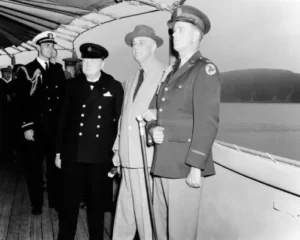
By Potsdam, with Truman and Attlee replacing Roosevelt and Churchill, Allied unity frayed as ideological rifts crystallized. The summits’ outcomes—from the UN’s framework to Germany’s occupation zones—reflected both cooperation and compromise, but also sowed Cold War divisions. These negotiations transformed wartime alliances into a fragile new order, where superpower rivalries and institutionalized diplomacy would define global politics for decades.
Potsdam Conference 1945: How Allied Decisions Shaped Post-WWII Europe & Cold War Tensions
The Potsdam Conference marked a pivotal moment in post-WWII history, where Allied leaders Truman (USA), Attlee (UK), and Stalin (USSR) negotiated Germany’s fate and global stability. Key outcomes included Germany’s division into four occupation zones, demilitarization of its industries, and denazification of institutions—measures designed to prevent future aggression. However, underlying tensions emerged over Soviet reparations demands and Eastern Europe’s political future, foreshadowing Cold War divisions.
Central to Potsdam was the Potsdam Declaration, where the U.S., Britain, and China demanded Japan’s unconditional surrender, hinting at “prompt and utter destruction” (later realized with atomic bombs). Truman’s revelation of the bomb to Stalin—who feigned surprise due to Soviet spies—highlighted shifting power dynamics.
Meanwhile, the Council of Foreign Ministers was established to draft peace treaties, reflecting Allied efforts to institutionalize post-war diplomacy despite growing mistrust. The conference members also agreed to revise the 1936 Montreux Convention, which had given Turkey full control over the Turkish Straits. Additionally, the conference set the stage for Allied troop (after the earlier Anglo-Soviet invasion) withdrawal from Iran.
The conference’s legacy was a fractured world order: Soviet dominance in Eastern Europe clashed with Western democratic ideals, while Germany’s occupation zones crystallized Cold War rivalries. Disagreements at Potsdam over reparations, territorial boundaries, and political control exposed cracks in Allied cooperation, paving the way for long-term rivalry between the emerging superpowers. Yet, it also laid the groundwork for international cooperation through constructive frameworks like the United Nations, blending hope with ideological strife.
💻 You May Also Read:
- The Yalta Conference: A Political World-Order & American Plan
- Warsaw Pact: The Forgotten Soviet Military Alliance
- The Cold War: Collapse of Soviet’s Communist Empire & American Triumph
- Landmarks in History: Iran’s First Encounter with Foreign Occupation
- The Rise and Fall of the Iron Curtain: A Divided Europe
- The Geopolitical Connection: Italian Eritrea and the British-Ethiopian Part
Post-WWII Diplomacy: The Potsdam Conference and Its Council Legacy
Established by the Potsdam Agreement in August 1945, the Council of Foreign Ministers (CFM) was created to negotiate peace treaties with former Axis powers and oversee the postwar reorganization of Europe. The Council included members from the United States, Soviet Union, United Kingdom, France, and eventually China, reflecting one of the first attempts by the Allied powers to work together diplomatically after the war.
The Paris Peace Conference of 1946–47 was a direct outcome of the groundwork laid during the Potsdam Conference, where the Allied leaders had outlined principles for post-war peace and the reorganization of Europe. To carry forward those decisions, the Council of Foreign Ministers—was tasked with drafting the terms of peace treaties.
Meeting in Paris, delegates from twenty-one Allied nations negotiated the conditions under which Axis-aligned countries like Italy, Hungary, Romania, Bulgaria, and Finland would be reintegrated into the international community. The resulting Paris Peace Treaties, signed in February 1947, formally ended the war with these nations and codified a new European order, reflecting both the collaborative and conflicting visions that had emerged at Potsdam.
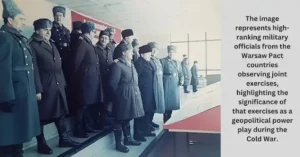
Negotiated by the Council of Foreign Ministers, Italy lost colonies and was obligated to pay $360 million in reparations to several nations, while Eastern European nations like Hungary and Romania faced Soviet-imposed terms—ceding territories (e.g., Bessarabia to USSR) and paying heavy reparations. Finland retained sovereignty but ceded Petsamo. These treaties cemented Soviet dominance in Eastern Europe, exposed Cold War fractures, and left Germany/Austria unresolved, setting the stage for prolonged East-West tensions.
In response, Western powers strengthened unity: the 1948 Brussels Treaty between France, Britain, the Netherlands, Belgium, and Luxembourg laid the foundation for NATO, aiming to counter Soviet influence and prevent communist expansion in postwar Europe. Notably, in May 1955, the Soviet Union formed the Warsaw Pact with seven Eastern Bloc nations in response to West Germany joining NATO, pledging mutual defense.
Historically, the Council marked a transition from wartime alliance to ideological rivalry, reflecting the broader geopolitical shift from WWII cooperation to Cold War confrontation. Its legacy endures in the institutional memory of diplomacy, illustrating both the potential and limitations of multilateral negotiation in a polarized world.
Iron Curtain Rising: From Potsdam to Cold War Rivalry
The 1945 Potsdam Conference marked a turning point in post-WWII diplomacy, where emerging rifts between the Soviet Union and Western Allies foreshadowed a divided Europe. Although the conference aimed to shape the postwar order, it exposed deep mistrust—especially over Stalin’s ambitions in Eastern Europe. Soviet-backed communist regimes soon took hold in countries like Poland, Romania, and Hungary, defying earlier promises of free elections.
This growing divide was famously described by Winston Churchill’s 1946 “Iron Curtain” speech, symbolizing the ideological and geopolitical split across the continent. The Iron Curtain became the metaphor—and later the reality—of a continent divided between Soviet communism and Western democracy. These developments laid the groundwork for the Cold War, a prolonged era of confrontation, arms races, and proxy wars that persisted until the Soviet Union’s collapse in 1991.
Potsdam Conference’s Overlooked Tragedy: Europe’s Postwar Displacement Crisis
While the Potsdam Conference addressed the political reorganization of Europe, its decisions had profound humanitarian consequences. The mass expulsion of ethnic Germans from Eastern Europe—sanctioned as “orderly transfers”—displaced over 12 million people, creating a refugee crisis of unprecedented scale. Many faced violence, starvation, and forced marches, with an estimated 500,000 to 1.5 million perishing during the exodus. This little-discussed tragedy underscored how high-level diplomacy often overlooked civilian suffering in its pursuit of geopolitical stability.
The Allies’ focus on territorial adjustments and power balances also ignored the psychological scars of war. Survivors of concentration camps, forced laborers, and orphaned children struggled to rebuild lives amid ruined cities and fractured communities. The conference’s failure to establish robust refugee protections or reconciliation mechanisms left a void filled by ad hoc relief efforts, revealing the limitations of postwar planning that prioritized punishment and borders over human dignity.
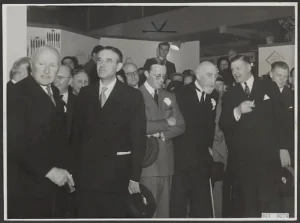
Conclusion: The Marshall Plan and Japan’s Surrender – Potsdam’s Unfinished Business
While the Potsdam Conference set the stage for postwar Europe, it was the Marshall Plan (1947) that truly addressed the continent’s economic devastation – a critical gap left by the Allies’ focus on political restructuring. This $13 billion recovery program not only rebuilt Western Europe’s infrastructure but created a bulwark against communist expansion, achieving what Potsdam’s reparations framework failed to do: stabilize economies to prevent extremism.
Meanwhile, Japan’s surrender – though demanded at Potsdam – came only after the atomic bombings revealed the terrifying new reality of warfare, forcing a swift conclusion that the conference’s diplomatic channels couldn’t achieve. The Marshall Plan’s economic diplomacy divided Europe more effectively than Potsdam’s politics – securing Western loyalty through reconstruction aid while Stalin imposed control. This contrast reveals Potsdam’s failures: its punitive approach required both America’s dollars and atomic might to truly reshape the postwar order.

